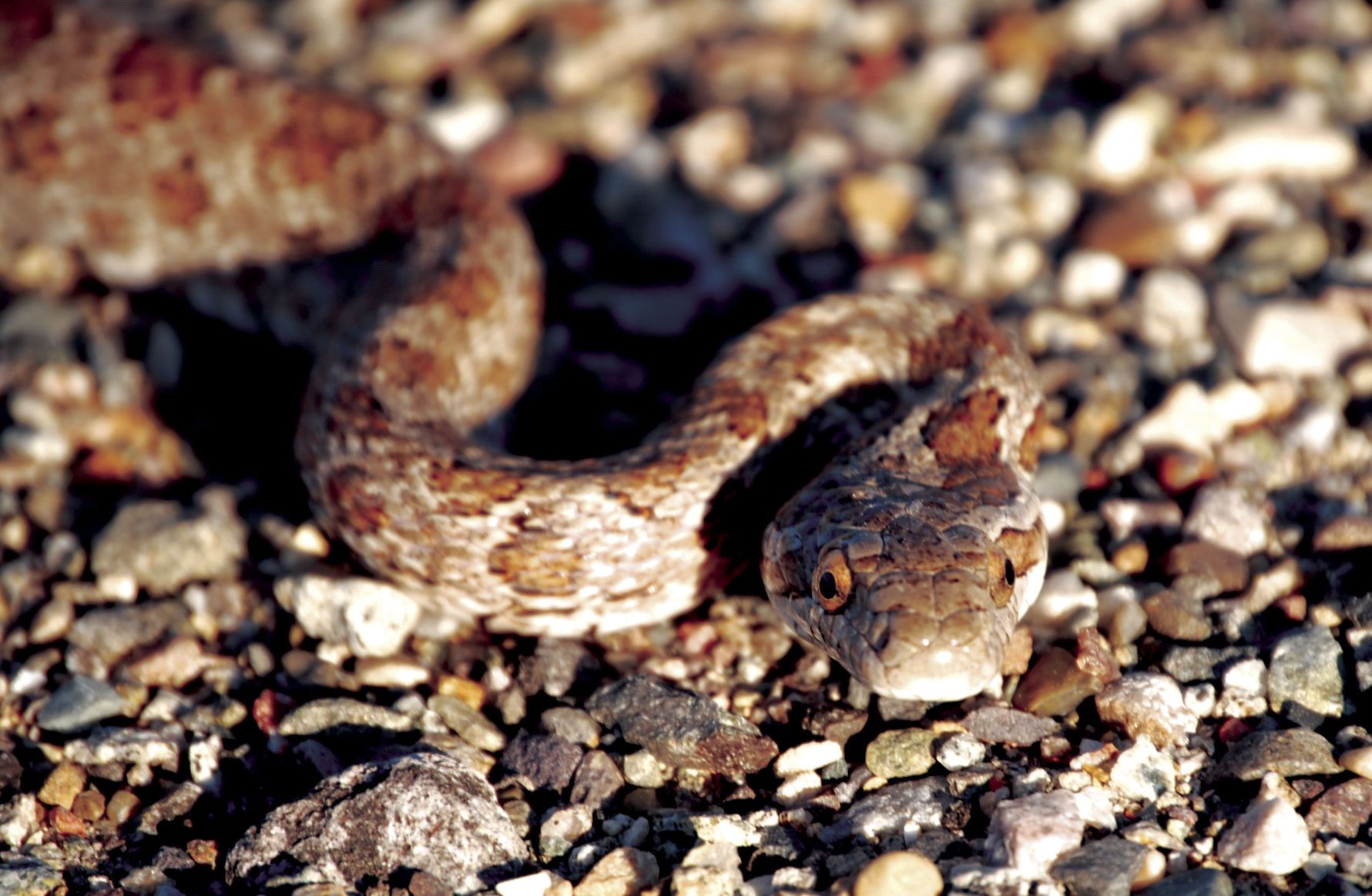SNAKES ON THE PLAINS
Many snakes in Utah are not particularly poisonous. Some have toxins to subdue prey, but are not overly dangerous to humans. Some snakes have fangs in the back of their mouths. These are also not particularly dangerous to humans. However, that doesn’t mean a snake won’t bite you.
Nearly every snake will bite, if it feels threatened.
And then there’s the rattlesnake. He has fangs in the front of his mouth and is deadly. But, even rattlesnakes don’t want to bite you.
The advice? Stay away from all snakes.
This is good advice for several reasons. Snakes don’t want a confrontation. Even rattlesnakes would rather run than fight. But, push them into a corner and they will fight. And you could die, although death is rare as a result of a rattlesnake bite.
Rattlesnakes use venom to immobilize prey. It takes a while to make and is a rather precious commodity. The last thing a rattlesnakes wants is to use up his venom on a human.
Snakes are good for the environment. They eat rodents. Without birds of prey and snakes, rodents would rule the world.
Rattlesnakes
Rattlesnakes are one of a handful of wildlife species that often strike fear in the hearts of people. But they shouldn’t. Knowing a little about the animal, and practicing a few simple things — like keeping your distance and not harassing a snake — can go a long way to keeping you safe.
Krissy Wilson, native species coordinator for the Utah Division of Wildlife Resources, says most rattlesnake bites happen when a person harasses a snake.
Like most animals, she says rattlesnakes fear humans. “They’ll usually do everything they can to avoid us,” she says. “If a snake thinks it’s threatened, though, and there’s no escape, that can change. The snake might strike to protect itself.”
Respecting the snake, and giving it plenty of space, are the keys to avoiding problems. The last thing you want to do is approach a rattlesnake.
“I can’t overemphasize how important it is to give rattlesnakes space, to watch where you step, to watch where you place your hands when you sit down, and above all, to resist the urge to harass or kill a snake,” she says.
Rattlesnakes are protected by Utah law; it’s illegal to harass or kill one.
“Rattlesnakes are a very important part of Utah’s ecosystem,” Wilson says. “They control pests and they’re fascinating to watch. Just make sure you watch from a safe distance.”
Rattlesnake safety tips are available from Wild Aware Utah at wildawareutah.org.
Southwest Partners also provides free rattlesnake safety information. A copy of the organization’s “Living with Venomous Reptiles” brochure is available online.
Staying safe
Wilson says summer is the time of year when most rattlesnake encounters happen in Utah.
Six rattlesnake subspecies live in Utah. The most common is the Great Basin rattlesnake. The Great Basin ‘rattler’ is found across the state.
Rocky, talus slopes are the places in Utah where you’ll most likely encounter rattlesnakes. In fact, Wilson says there’s a good chance you’ve been close to a snake while hiking and never knew it.
“A snake’s camouflage allows it to blend into its surroundings,” she says. “They’re tough to see.” If you hear a rattlesnake before you see it, walk slowly away from the sound.
If you are bitten
Don’t panic (although that’s easier said than done). Many rattlesnake bites are “dry bites,” which means no venom is injected.
Venom is difficult to make. A snake wants to use the venom to get food, not to protect itself from a human.
That being said, all snake bites should be treated as though it is venomous, until determined otherwise.
Remain calm.
The more excited you get, the quicker the venom gets to the heart.
Get out of the sun and get to a hospital as quickly as possible. Only hospitals have access to anti-venom.
Because it’s used so rarely, only regional medical centers stock anti-venom.
If necessary anti-venom can be shuttled to an outlying hospital by Utah Highway Patrol Troopers, or in rare instances, can be flown via helicopter.

